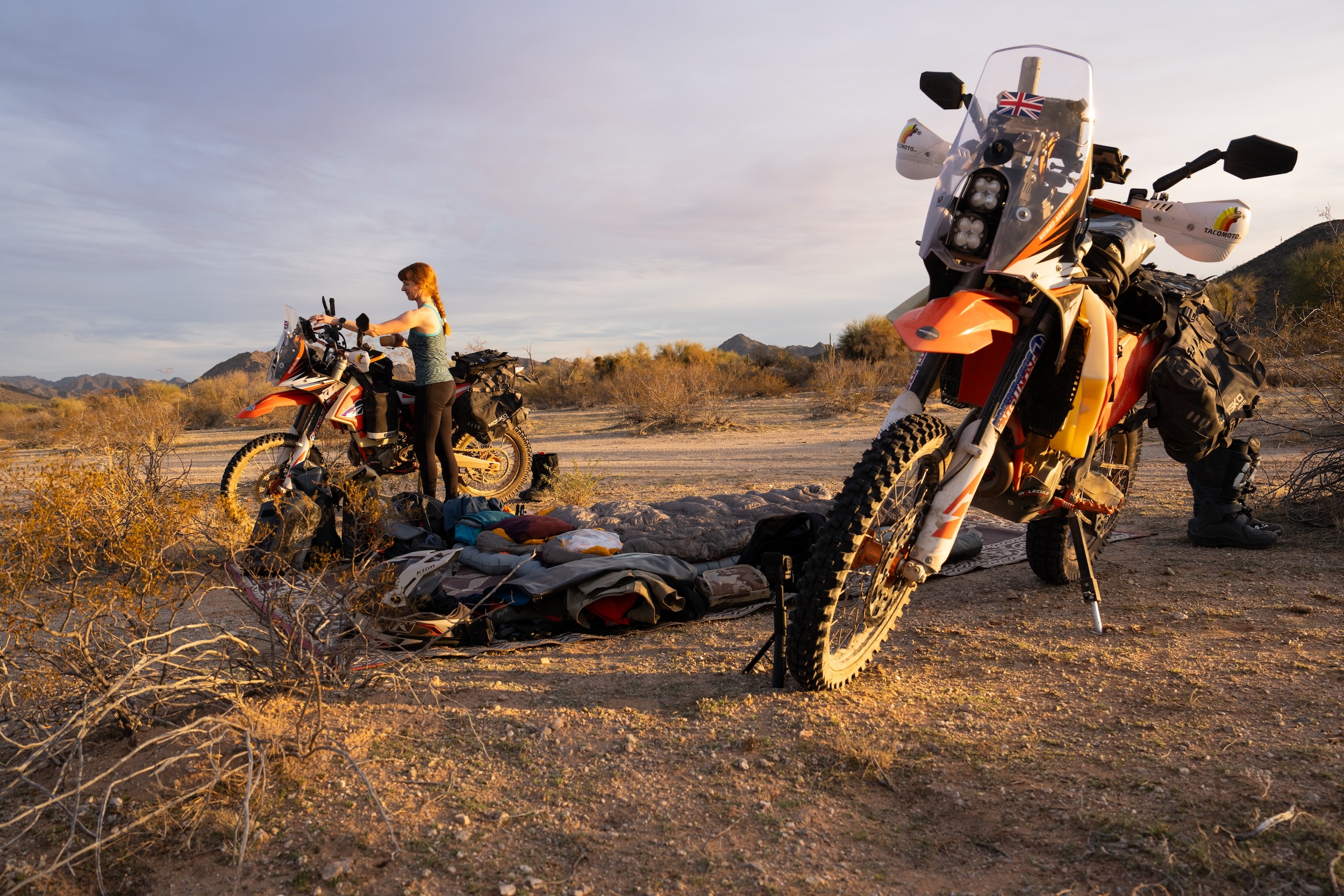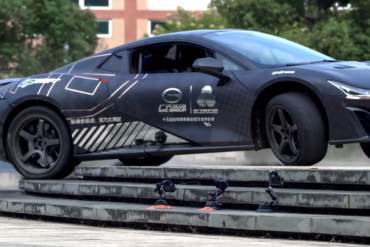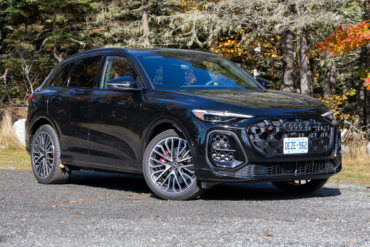Prepared I was not, as we kickstarted a significant shakedown ride to unleash our newly adventurized KTM 500 EXC-Fs on the legendary El Camino del Diablo. Known as the Devil’s Highway, this trail, a blend of Native American and pioneer history, winds through the unforgiving landscapes of the Sonoran and Yuma Deserts. It links the towns of Ajo and Yuma in Arizona against the backdrop of the formidable Gila and Tinajas Altas Mountains.
I wanted an off-road adventure. But, I was clueless that a baptism of fire awaited.
The More, the Merrier
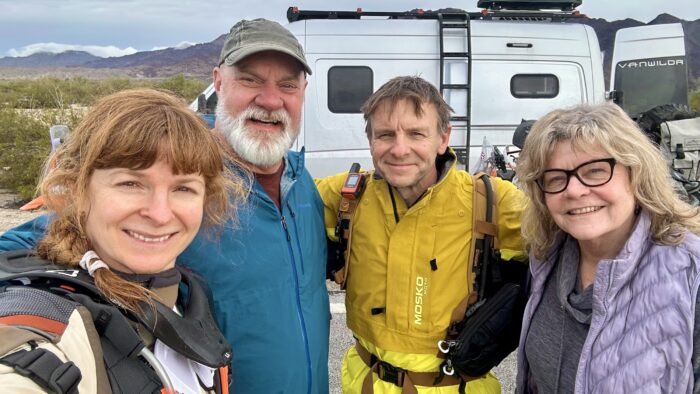
Gratitude filled our hearts as friends Beth and Ken joined the expedition in their campervan, along with Floki, their canine companion. The trio evolved into our support network, indispensable allies following us in their chase truck — a reassuring presence throughout the journey.
A crucible of history and nature beckoned us to explore its captivating blend of cultural heritage and untamed wilderness, a stellar backdrop for the remote venture. Fortunately, as our seasoned friends had negotiated the way a handful of times, their assurance was resolute. “The ride would present sporadic sections within my reach as a novice sand rider.”
Way of the Devil
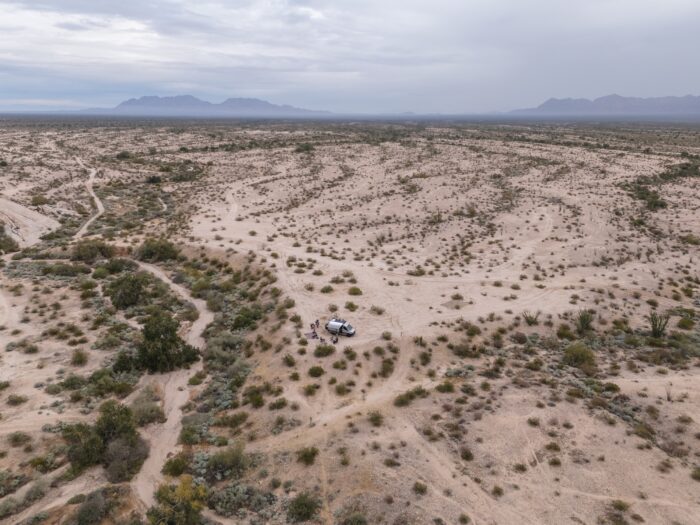
Also known as the Old Yuma Trail, El Camino del Diablo spans 130 miles. It presents various obstacles — the Border Wall for some — and scenic wonders. The route’s isolation and rugged conditions, hours from a hospital or cell coverage, added an adventurous edge. It made it a test of grit and endurance in seeking an off-the-beaten-path experience.
The route’s moniker, the “Way of the Devil,” echoes the extreme hardships faced by those who dared to traverse its unforgiving territory. Two thousand folks have perished since European arrival, as marked by only 50-odd trailside graves en route.
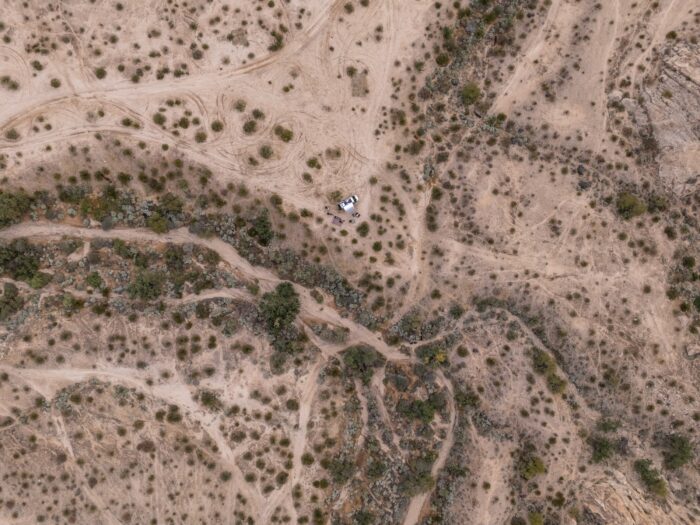
It’s a Native American Thing
With roots dating back thousands of years, the route was part of a host of indigenous trails used by Native American tribes, primarily Tohono and Hia-ced O’odham. It gained prominence as the American Indians guided the first Spanish explorers, soldiers, missionaries, and traders through its arid expanse.
Over the centuries, the Sonoyta-Yuma Trail evolved into a dangerous trade route from Sonora, Mexico, and later attracted prospectors lured by gold fever along the Colorado River.
Navigating the stark beauty of the desert enveloped us in a dramatic panorama of cacti-studded tracts dotted with iconic saguaro and teddy bear cholla cacti gardens, vast dunes, and rocky outcrops. But only after securing a free permit online for the Barry Goldwater Range and Cabeza Prieta Wildlife Refuge could we enter these government-managed lands.
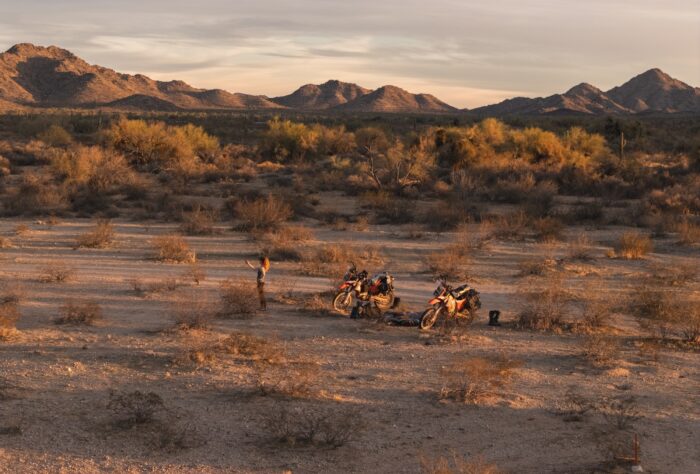
If the Cacti Could Talk
Starting from the junction at Highway 85 and Darby Wells Road in Ajo, off we went with our curiosity antennae up about the upcoming natural theater of wonders. After exiting BLM territory and traversing the northern border for 12 miles, we entered Organ Pipe Cactus National Monument.
This is where the desert panorama unfurled like the pages of a captivating storybook. Nature’s architects sculpted a unique cast of characters, starring the iconic organ pipe cactus standing tall like a silent guardian. Within a botanical desert garden, saguaros and prickly pears joined the cactus parade.
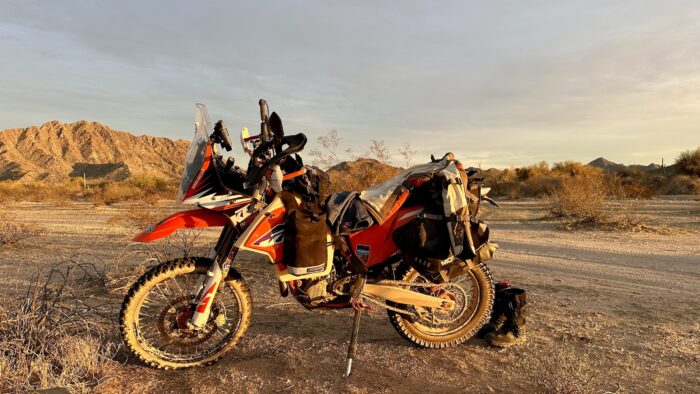
Bates Well
Approaching Bates Well, just 4 miles down the trail, unveiled a vibrant mirage in the arid beauty of the Sonoran Desert. From 1935 to 1976, Bates Well Ranch, led by visionary Robert Louis Gray, Sr., played a pivotal role in developing the ranching potential of the region.
As part of the Gray family partnership, the ranch left an indelible mark on the lands of Organ Pipe National Monument. The ranch house, relocated from Growler Mine to Bates Well in 1942, symbolizes adaptability and the traditional frontier ethos of repurposing materials.
With origins possibly traced to a miners’ cabin, Bates Well represents the frontier ranching pattern in early 20th-century Arizona, earning recognition on the National Register of Historic Places in 1994.
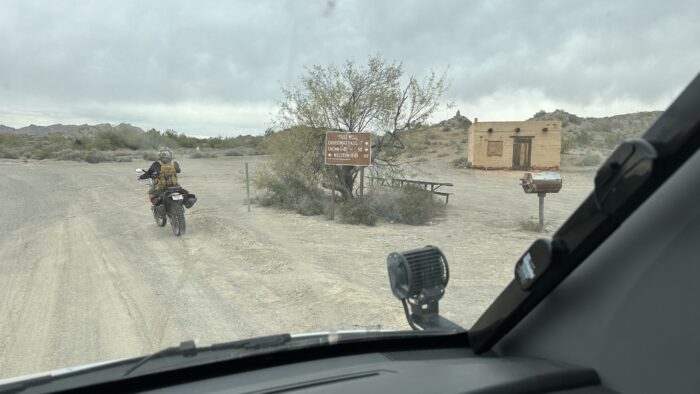
Anything for a Smoke
Next, chancing upon a solemn site enveloped in the timeless silence of the Sonoran Desert, marked the challenges and sacrifices encountered along the Devil’s Highway. Dave O’Neill, a prospector, met his fate on the treacherous trail during a storm, succumbing to exposure and dehydration. O’Neill’s burro led to the discovery of his lifeless body west of Papago Well, immortalizing the pass and hills in his name.
Today, his grave (mile 44 from the trailhead), adorned with a rusted iron cross, rocks, and people’s random trinkets, attracts adventurous travelers. Yet, it initially fell victim to grave robbers, allegedly the same men that buried him a fortnight before in 1975, exhuming his body for chewing tobacco. His 1915 death and burial, marked by rheumatism and Bright’s disease, added a layer of complexity to the narrative.
Deep Slumber
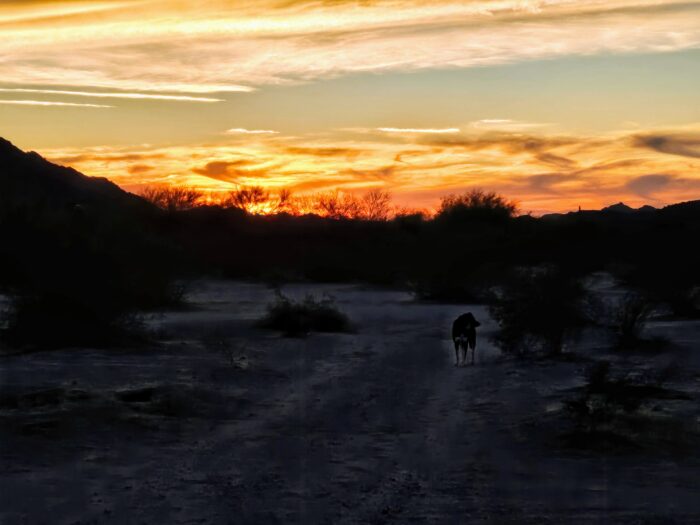
By sunset, the captivating beauty of the desert unfolded all around us the first evening. Cue the spirited coyote yips filling the air, beckoning us to unwind in our sleeping bags thrown on the ground and bask in the landscape’s tranquility. Tired but not tortured, I sank like a stone into a deep slumber.
When Willingness Exceeds Skill
Awake early and well-rested, I was reborn. And thankful, as by the afternoon, the ride turned biblical.
It pushed me out of my comfort zone as I shed irrational fears that had immobilized me in the past. Meanwhile, Jason navigated the route’s deep and undulating demands with his usual Dakar-rad readiness.
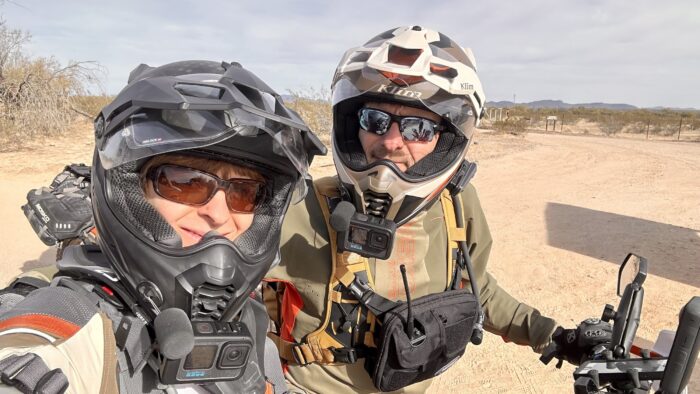
When sand had me in its demonic spiral grip, an eater of souls, Floki offered comfort during rest stops in his endearing way, kissing my nose and performing his signature move of leaning his backside into me.
As the sun slowly descended, I barked, “Shut up, thighs!” leaning back to keep my front wheel light. Depleted in reserves, my missteps grew. A hair’s breadth away from wrapping myself around an organ pipe cactus, I surpassed my limits within the shifting terrain as my arms hung loose as noodles, muscles aflame.
I felt completely graveled. It was then, among the growing shadows, that we rallied. Hoisting my motorcycle into the sanctuary of the campervan alleviated the burden of the blue funk I was in.
Hell of a Day
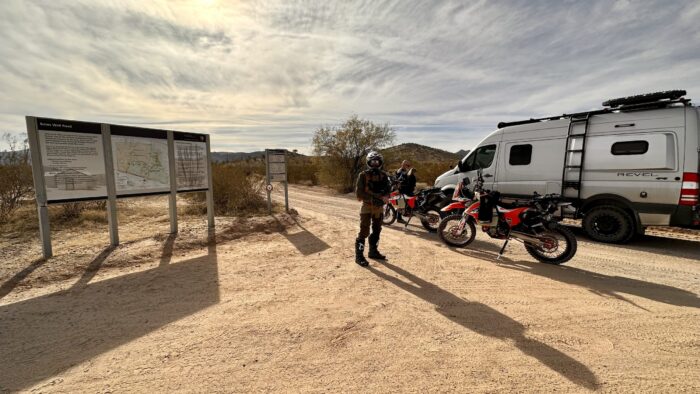
Tinajas Altas, also known as “High Tanks,” is one of the southwest’s most renowned high-altitude watering havens. It is hidden amid the Sonoran Desert’s rugged beauty. And, it made an idyllic spot to pull up the handbrake and kick the side stands down overnight.
The vicinity around the tanks revealed substantial evidence of human habitation, featuring abundant ancient grinding stones and rock art. Various routes lead to the upper tanks, each presenting distinct levels of exposure.
The reservoirs stand tall, witnessing the dance of desert creatures and the golden sunsets that paint the Arizona sky. As the sun painted the desert hues of honey and amber, we indulged in a glass of red that evening. We spun straw from the day’s hellish grind into entertaining gold anecdotes.
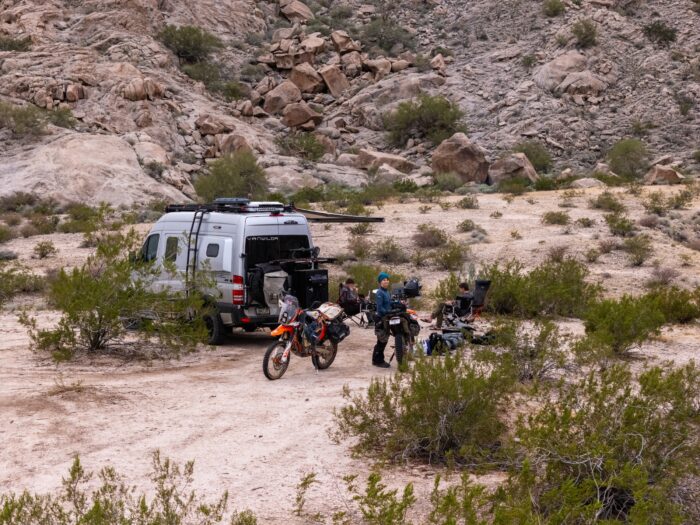
Let Go & Lean Into It
The final day saw me back in the saddle, “embracing the suck” posed by the deepest sand stretches encountered to date. Hah — it became evident that mastering the art of weight-shifting in the sandpit was pivotal. I had a long way to go, but something clicked.
Miles over the loose stuff, sharp volcanic rocks, watery sand washes, and around serpentine turns, a sense of euphoria enveloped me on the terra incognita. Not even the rain, obscuring my vision, thwarted the prowess of WilyCat (my nimble machine) as it triumphed over every hurdle with ease and grace — bringing me along for the ride of my life!
Good to Know
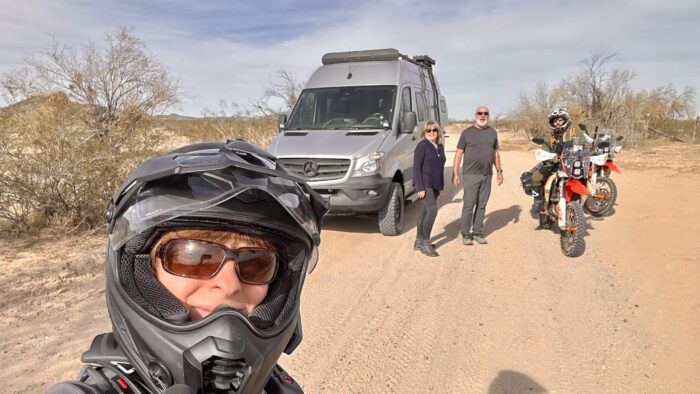
The green route for the Devil’s Road on OnXOffroad is manageable for standard 4×4 vehicles and high-clearance motorcycles, depending on how you feel about long stretches of deep sand. Ongoing border wall construction efforts by the U.S. government have transformed parts of the original road into broad sandy gravel paths suitable for motorcycles, cars, trucks, and heavy equipment.
While completing this trail in a day is possible, I’d discourage it. Your motorcycle’s tolerance for dust and interactions with U.S. Border Patrol agents at checkpoints will determine your pace. Rushing through the trip is not recommended, as it may lead to missing highlights worthy of your eyeballs.
Bring extra fuel and water for exploring remote side trails. They offer access to some of the most stunning and secluded campsites in the lower 48 states.
The optimal window for traveling the trail lies between October and April. Our January trip saw us riding in Goldilocks temperatures, which were just right.
El Camino del Diablo experiences scorching temperatures exceeding 120 degrees Fahrenheit outside this period, leading to fatalities from dehydration, heat exhaustion, exposure, and hyperthermia. Winter travelers should prepare for fluctuating conditions, including potentially frigid overnight temperatures.
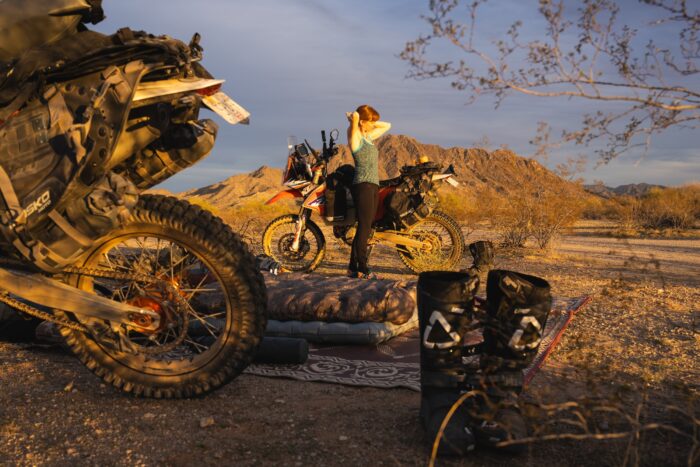
The Road to Hell
In our friends’ hazy recollections of the staple trail, the rediscovery of my off-road passion overshadowed any disparities in expectations, despite a lack of finesse up on the pegs akin to a raccoon on meth.
Still, the fishtailing fiasco elevated my off-road skills, steering clear of any “offies.” It was an unforgettable adventure, marked by conquered challenges in the satanic sand — not called the Devil’s Road for nothing — and the unwavering camaraderie of friends and furry companions.
My exhaustion-lidded eyes suddenly sprung wide as we left the dirt and hit the pavement in Yuma. I dismounted, agog — utterly spent and utterly happy.
